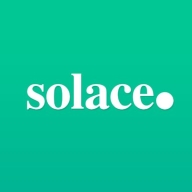

Databricks and PubSub+ Platform both compete in the field of data processing and messaging solutions. Databricks tends to have the upper hand due to its comprehensive data analytics capabilities and scalability, appealing to enterprises that prioritize large-scale analytics projects.
Features: Databricks offers advanced data processing abilities, integrates well across cloud ecosystems, and is known for its scalability, supporting languages like SQL, Python, and R. Its intuitive interface and collaborative workspace enhance productivity. PubSub+ Platform excels in real-time data streaming and event management and supports multiple messaging protocols, making it suitable for hybrid cloud environments.
Room for Improvement: Databricks can improve its visualization features, expand its library and tool integration, and clarify pricing details. Enhancements in error messaging and documentation would aid usability. PubSub+ could improve third-party agent support, integration capabilities, and provide better pooling and observability tools for messaging operations.
Ease of Deployment and Customer Service: Databricks is versatile with deployments in both public and private clouds but sometimes faces delays in customer support responses. PubSub+ offers clear documentation and is easy to deploy in hybrid and on-premises setups, with minimal support required for enterprise deployments, reflecting strong customer satisfaction.
Pricing and ROI: Databricks is considered expensive due to cloud-related expenses, but its performance and scalability often justify the cost. It offers a positive ROI for improved data handling. PubSub+ provides cost-effective messaging solutions with a focus on large message volumes, supporting a sound ROI for businesses needing robust messaging capabilities.
When it comes to big data processing, I prefer Databricks over other solutions.
For a lot of different tasks, including machine learning, it is a nice solution.
As of now, we are raising issues and they are providing solutions without any problems.
Whenever we reach out, they respond promptly.
I rate the technical support as fine because they have levels of technical support available, especially partners who get really good support from Databricks on new features.
Databricks is an easily scalable platform.
I would rate the scalability of this solution as very high, about nine out of ten.
The patches have sometimes caused issues leading to our jobs being paused for about six hours.
Although it is too early to definitively state the platform's stability, we have not encountered any issues so far.
They release patches that sometimes break our code.
Databricks is definitely a very stable product and reliable.
We could use their job clusters, however, that increases costs, which is challenging for us as a startup.
This feature, if made publicly available, may act as a game-changer, considering many global organizations use SAP data for their ERP requirements.
If I could right-click to copy absolute paths or to read files directly into a data frame, it would standardize and simplify the process.
It was as impressive as Kafka, better than Kafka based on my experience working on the Solace and Kafka white paper.
It is not a cheap solution.
The Unity Catalog is for data governance, and the Delta Lake is to build the lakehouse.
The platform allows us to leverage cloud advantages effectively, enhancing our AI and ML projects.
Databricks' capability to process data in parallel enhances data processing speed.
The solution's ability to decouple message producers and consumers allows us to have high cohesion and low coupling, making it an excellent solution for that purpose.
| Product | Market Share (%) |
|---|---|
| Databricks | 11.8% |
| PubSub+ Platform | 3.2% |
| Other | 85.0% |


| Company Size | Count |
|---|---|
| Small Business | 25 |
| Midsize Enterprise | 12 |
| Large Enterprise | 56 |
| Company Size | Count |
|---|---|
| Small Business | 3 |
| Midsize Enterprise | 1 |
| Large Enterprise | 12 |
Databricks offers a scalable, versatile platform that integrates seamlessly with Spark and multiple languages, supporting data engineering, machine learning, and analytics in a unified environment.
Databricks stands out for its scalability, ease of use, and powerful integration with Spark, multiple languages, and leading cloud services like Azure and AWS. It provides tools such as the Notebook for collaboration, Delta Lake for efficient data management, and Unity Catalog for data governance. While enhancing data engineering and machine learning workflows, it faces challenges in visualization and third-party integration, with pricing and user interface navigation being common concerns. Despite needing improvements in connectivity and documentation, it remains popular for tasks like real-time processing and data pipeline management.
What features make Databricks unique?In the tech industry, Databricks empowers teams to perform comprehensive data analytics, enabling them to conduct extensive ETL operations, run predictive modeling, and prepare data for SparkML. In retail, it supports real-time data processing and batch streaming, aiding in better decision-making. Enterprises across sectors leverage its capabilities for creating secure APIs and managing data lakes effectively.
PubSub+ Platform is designed for real-time message publishing and outstanding interoperability. With features like intuitive administration and topic filtering, it offers both stability and high performance for scalable deployments across diverse scenarios.
PubSub+ Platform enhances data integration with its event mesh and seamless protocol compatibility, providing a comprehensive solution for organizations tracking shipments, generating reports, and managing transactions. Its granular topic filtering and WAN optimization ensure high utility in event-driven applications and cloud deployments. Users highlight the platform's intuitive administration and ease of management, though some seek improved integration with third-party tools and enhanced observability. Concerns include scalability for large payloads and training resource availability. Despite its interface complexity, PubSub+ remains valuable for trading and market data distribution.
What are the key features of PubSub+ Platform?PubSub+ Platform is widely implemented for asynchronous messaging in industries like finance for trading and market data, logistics for shipment tracking, and tech operations management. It enables companies to modernize applications while ensuring data accuracy and efficiency across global systems.
We monitor all Streaming Analytics reviews to prevent fraudulent reviews and keep review quality high. We do not post reviews by company employees or direct competitors. We validate each review for authenticity via cross-reference with LinkedIn, and personal follow-up with the reviewer when necessary.